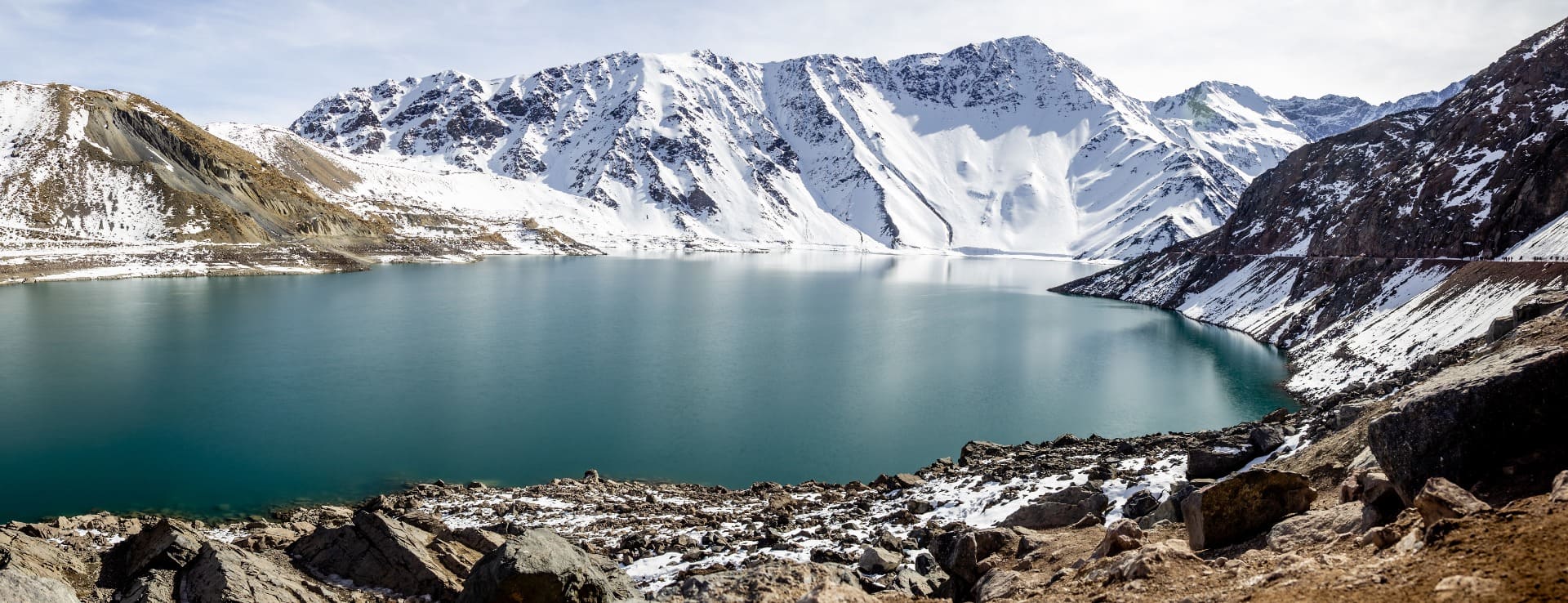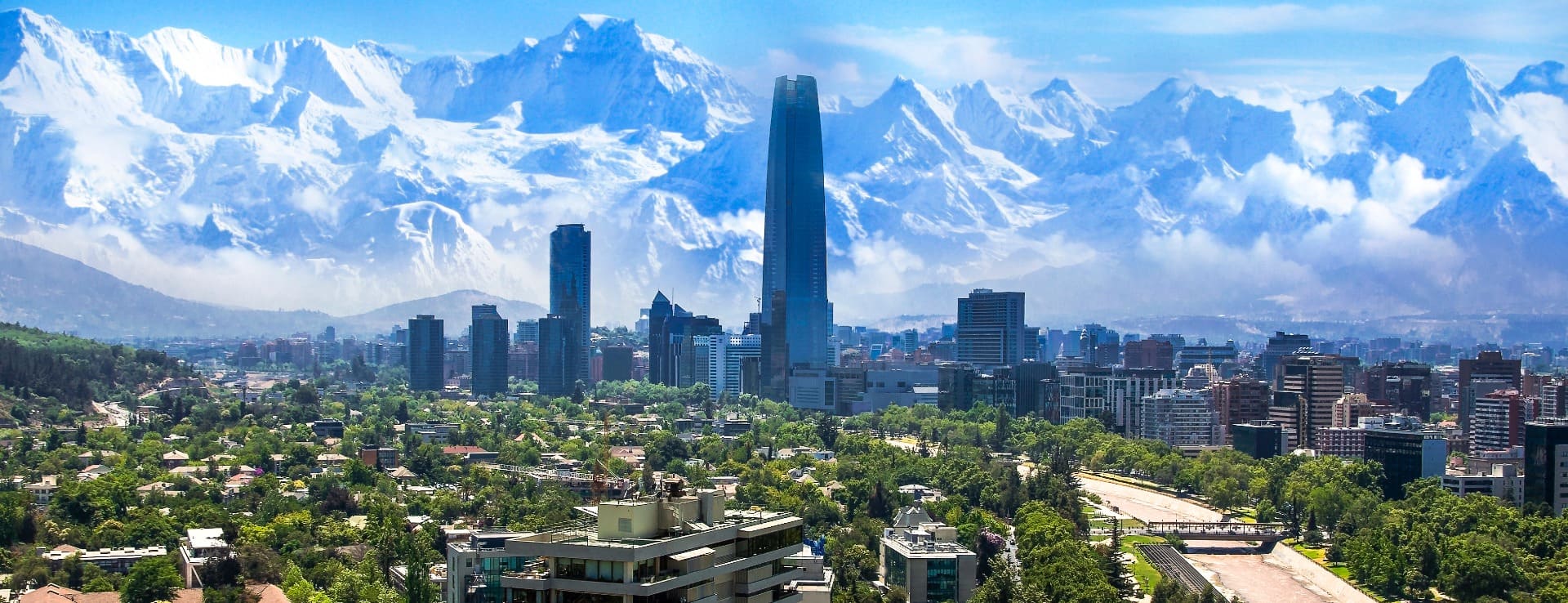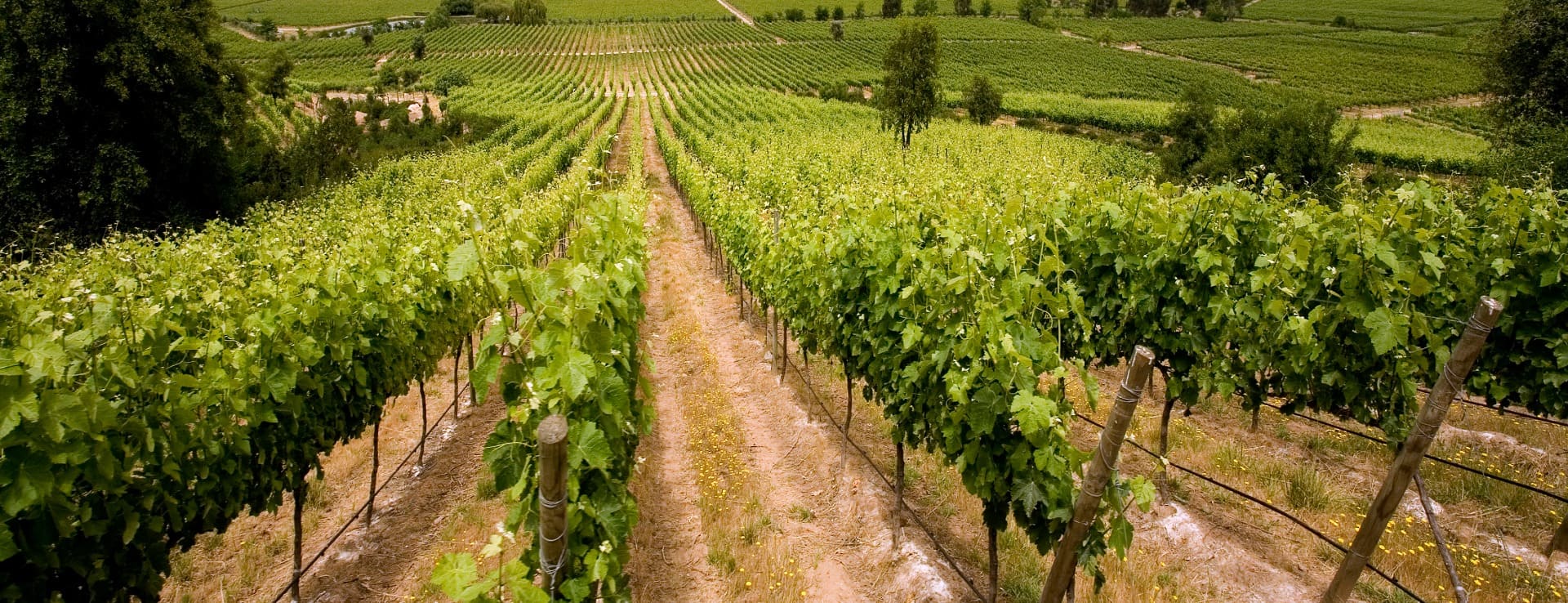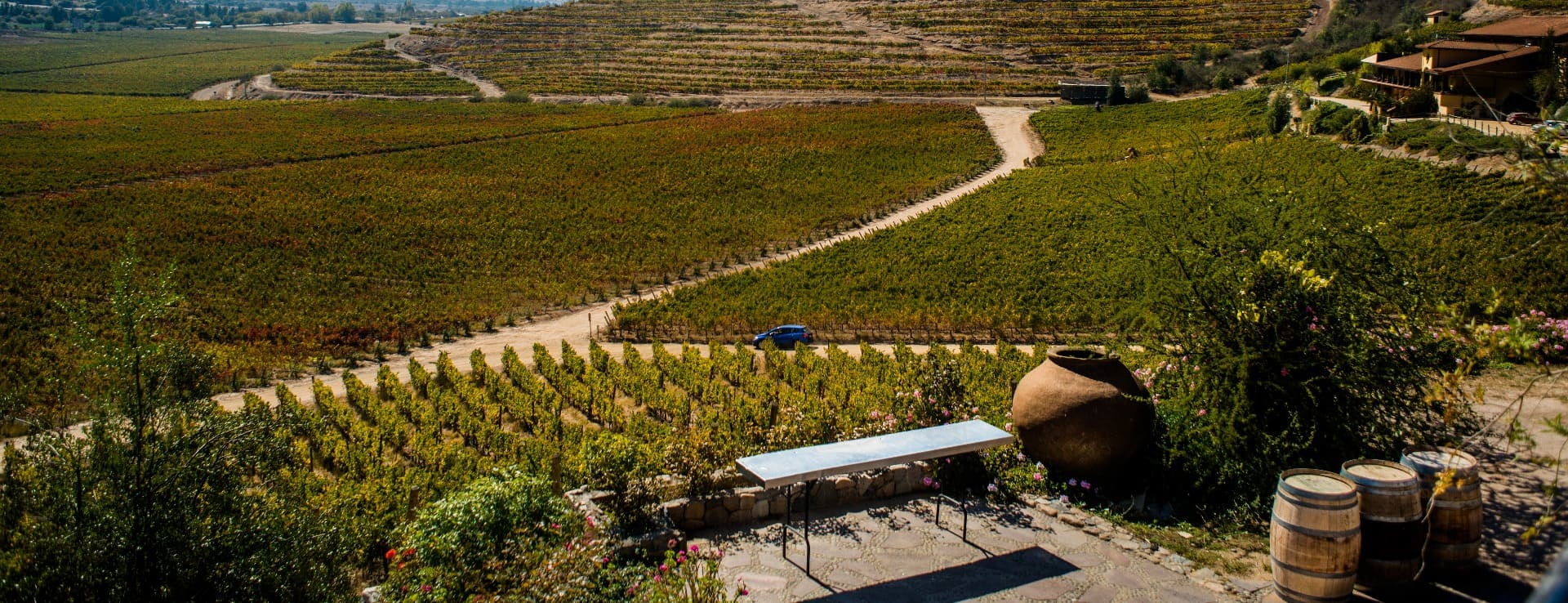Find your winery or vineyard
Infographic of the Region
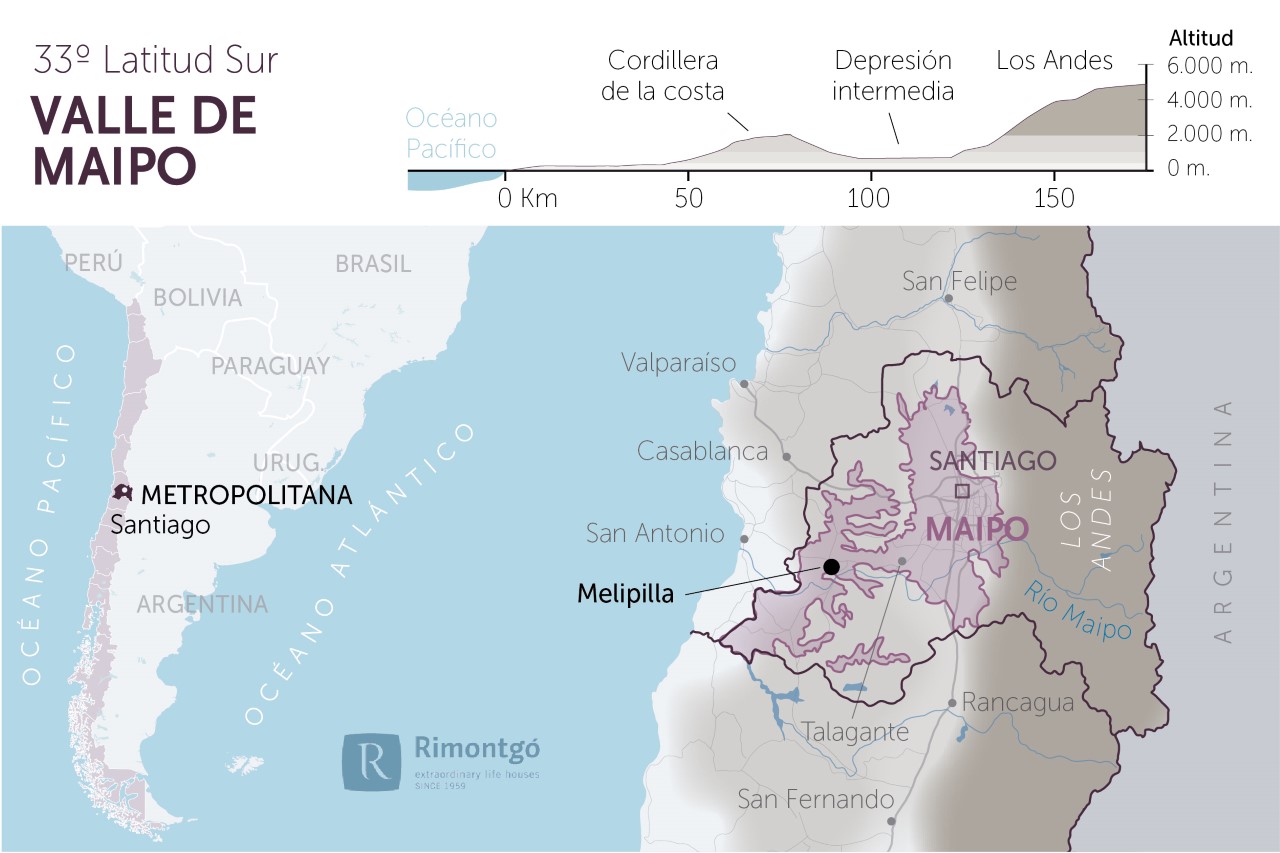
The winemaking tradition of Santiago and the Maipo Valley
The Santiago Metropolitan Region is an administrative region with capital in the city of Santiago, which is also the capital of the country. It is formed by six provinces: Talagante, Santiago, Melipilla, Chacabuco, Cordillera and Maipo. It is worth mentioning that is the second smallest region in Chile (barely 15,400km2), therefore; on the contrary, it is the most populated, with a population of more than 7,100,000 inhabitants. The Santiago Metropolitan Region, from a vine-producing point of view, is included in the Central Valley region. The provinces that preferentially include the cultivation of grapes are: Santiago, Melipilla and Talagante, with the region of Maipo Valley and the well-known subregion of Maipo-Andes.
A distinguishing aspect of the Santiago Metropolitan Region is that it is the only Chilean region without direct access to the Pacific Ocean. Therefore, in the wine subregion integrated in this region we won’t find the factors derived from the Pacific Ocean’s presence (breeze, winds, preferably) that have an outstanding presence in other Chilean subregions. The climate in the Santiago Metropolitan Region can be classified as Mediterranean type weather.
With regards to geography in the region of Santiago, both the Andes and the Coastal Range, which delimit the Central Valley, stand out. While in the Andes the height of the peaks can exceed 6000 meters (case of the Marmolejo or Tupungato hills), in the Coast range the massifs reach heights slightly higher than 2000 meters, like the Cantillana and El Roble mountains.
As for the economy, we have to keep in mind that in this region is located the capital of the country, Santiago, so the service industry is one of the most developed. As it happens in other regions, in the metropolitan region there is also service industry. In the Santiago Metropolitan Region special emphasis is placed on the agricultural and horticultural production, of which a 90% corresponds to irrigated land. The third part of vegetables as well as the fourth part of fruit trees of Chile are grown in this region. In addition of wheat and corn, especially cultivated in the Central Valley, among the Andes and the Coast Range, the production of table grape stands out. In this region wineries and vineyards for sale are found close to the capital Santiago.
Santiago is among the touristic attractions of the region. There are several interesting places in it such as the Palacio de la Moneda (the Government’s headquarters), the National Library, the National Museum of Fine Arts or the Congress building. In terms of urban layout which boast large avenues; stately colonial style houses, formerly inhabited by Spanish and French conquerors and Modernist buildings mix together. Outside the capital area, interest moves to settings like the National Reserves of El Clarillo, El Morado, the Cajón del Maipo, surrounded by picturesque towns and, the Laguna de Aculeo, in which fishing and water sports can be practised. The presence of the Andes allows skiing to many people from Santiago, together with tourists and Chilean people belonging to other regions who go to several ski resorts spread all around the Andes. Among them: Farellones, Lagunillas or La Parva.
The winemaking history in the Santiago Metropolitan Region is documented. Therefore, we know that in the former neighbourhoods, until the middle 20th century, it was no surprise to find vines surrounding the properties of the inhabitants of Santiago and its neighbouring areas, both in houses that denote greater economic power and in more modest houses. We also know that the Cabildo (Municipal Council) or the city’s government was in charge of the management to some extent of the obtained grapes. This cultivation of vines next to the properties was known colloquially as ‘parrón’ or ‘parronal’ (climbing vines), a habit that is still present in some of the ancient neighbourhoods of Santiago. Another important factor in terms of vine cultivation that can be extended to other Chilean regions is the religious factor. With the cultivation of vines, parishioners had guaranteed the continuous supply of wine with the aim of celebrating the Holy Mass. We need to keep in mind that in the past there weren’t communication facilities of which Chile has nowadays and, thus, during the winter run the risk of being isolated with the resulting difficulties in receiving or sending goods or food.
The designation of origin Valle del Maipo is found in this region. The vineyards are situated in an altitude rank between 400 and 800 metres. This is one of the most important designations of origin and with more prestige in Chile thanks to the commitment for quality wines obtained from the Cabernet Sauvignon grape variety. The Maipo Valley is located between the Andes and the Coast Range, crossed by two rivers whose water is used to irrigate the vineyards: the Maipo River and the Mapocho River. A certain differentiation can be established between the wines depending on their production area within the Maipo Valley. In Maipo Medio, with a greater presence and influence of the sun, more fruity wines are produced. In the Coastal Maipo area, close to the coastal Range, wines have higher acidity (as is the case with Chardonnay) while in the Andean Maipo or Alto, with a colder climate, wines with high levels of tannins and greater structure are produced.
Provinces
Discover more wineries and vineyards for sale in these wine regions in Chile
Subscribe to our mailing list to receive news about wineries and vineyards.


